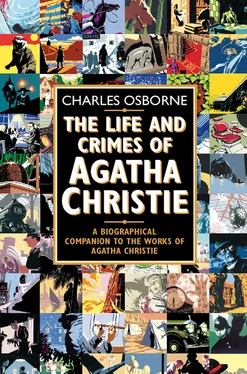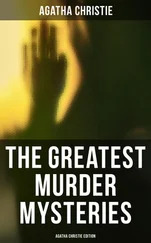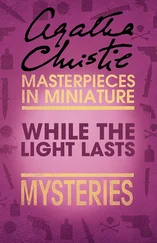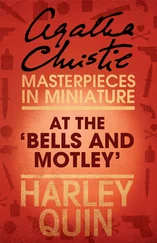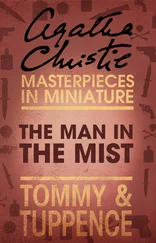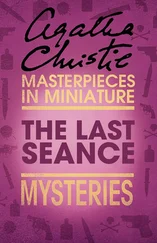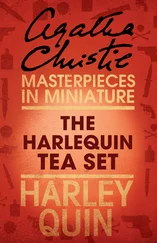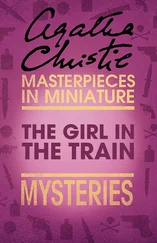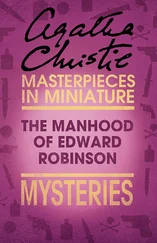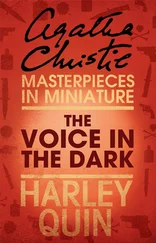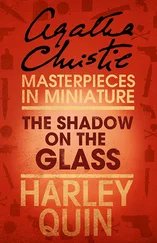In her autobiography, written in old age, Agatha Christie made no direct reference to these exciting events of 1926, contenting herself merely with the observation that after illness came sorrow, despair and heartbreak, and that there was no need to dwell on it. Further clues to the mystery of her behaviour in December 1926 are inextricably embedded in the crypto-autobiographical novel, Unfinished Portrait, which she wrote a few years later.
2 The Vintage Years Contents Cover Title Page THE LIFE AND CRIMES OF AGATHA CHRISTIE CHARLES OSBORNE Copyright Dedication For Joe Hansen, crime novelist in the Christie mould, in Los Angeles; and Ken Thomson, his sometime accomplice in publishing, in London. Preface 1 Appearance and Disappearance 2 The Vintage Years 3 War and Peace 4 ‘The Mousetrap’ and After 5 Towards the Last Cases Plate Section Keep Reading Конец ознакомительного фрагмента. Текст предоставлен ООО «ЛитРес». Прочитайте эту книгу целиком, купив полную легальную версию на ЛитРес. Безопасно оплатить книгу можно банковской картой Visa, MasterCard, Maestro, со счета мобильного телефона, с платежного терминала, в салоне МТС или Связной, через PayPal, WebMoney, Яндекс.Деньги, QIWI Кошелек, бонусными картами или другим удобным Вам способом. Bibliography Index Конец ознакомительного фрагмента. Текст предоставлен ООО «ЛитРес». Прочитайте эту книгу целиком, купив полную легальную версию на ЛитРес. Безопасно оплатить книгу можно банковской картой Visa, MasterCard, Maestro, со счета мобильного телефона, с платежного терминала, в салоне МТС или Связной, через PayPal, WebMoney, Яндекс.Деньги, QIWI Кошелек, бонусными картами или другим удобным Вам способом. Notes Illustration Acknowledgements About the Author About the Publisher
The Big Four POIROT (1927)
Mrs Christie spent the first weeks of 1927 recovering from her December adventure, at Abney Hall in Cheadle, near Manchester, the home of her sister and her brother-in-law, Madge and Jimmy Watts, while Archie Christie continued to live at Styles, which he and Agatha had agreed to sell. Archie wanted a divorce as quickly as possible, but Agatha thought it fairer to their child Rosalind to wait for a year, so that Archie could be quite certain that he knew what he wanted. It is from this time in her life that Agatha Christie’s revulsion against the press and her dislike of journalists can be dated. She had felt, she said later, like a fox: hunted, her earths dug up, and followed by yelping hounds. She had always hated notoriety of any kind, and now could hardly bear even the kind of publicity consequent upon her successful career as a writer.
With her marriage in ruins, Mrs Christie was forced to give serious thought to that career. She had little money other than that which she earned from her writing; it was important, therefore, that she should continue to produce books at regular and frequent intervals. She had been unable to write since the death of her mother; her brother-in-law Campbell Christie, Archie’s brother, now made the suggestion that the last twelve of the Hercule Poirot stories which had been published in the weekly magazine, The Sketch, and which had not yet been collected into a book, could with very little rewriting be strung together in such a way that they would make a kind of picaresque crime novel. Campbell Christie helped his sister-in-law with the rewriting, for she was still in no condition to manage it on her own, and the result was The Big Four.
In The Mysterious Affair at Styles, The Murder on the Links and The Murder of Roger Ackroyd we were presented with dazzlingly plotted domestic crime novels, their mysteries solved by Hercule Poirot. In the mystery-thriller novels The Secret Adversary, The Man in the Brown Suit and The Secret of Chimneys we were introduced to a world of international crime in which Poirot did not appear. Now, in The (hastily patched-together) Big Four, the consultant detective who prefers to stay at home finds himself in the wrong kind of novel, forced to chase after the Big Four, an international crime organization ‘hitherto undreamed of. The four would-be rulers of the world heading the organization are Li Chang Yen, an immensely powerful ‘Chinaman’ (to use Mrs Christie’s term which nowadays would be thought offensive), a wealthy American, a mysterious French woman and, the chief executive of the cartel, an Englishman referred to as ‘the destroyer’.
Hastings, who has spent the previous year and a half managing a ranch in the Argentine (‘where my wife and I had both enjoyed the free and easy life of the South American continent’) arrives in London on a business trip, and of course immediately makes his way to 14 Farraway Street, where he had shared rooms with Poirot, only to find his old friend about to set out to visit him in South America, as well as to undertake a commission there on behalf of Abe Ryland, an American who is ‘richer even than Rockefeller’. It takes the death of a stranger who bursts into Poirot’s rooms in a state of collapse to change the detective’s plans and to set him and Hastings on the trail of the Big Four, one of whom had been responsible for offering Poirot the South American commission merely to get him out of the way.
One by one, Poirot picks off the criminals in a series of only loosely connected episodes. In the first, he does not actually catch the real criminal but is at least instrumental in saving an innocent man from the gallows, which, as Poirot remarks to Hastings, is enough for one day. It is in this chapter, ‘The Importance of a Leg of Mutton’, that Mrs Christie makes unacknowledged use of a brilliant piece of deduction which she, if not Poirot, ought to have credited to Sherlock Holmes.
Throughout The Big Four, Poirot is thrust into adventures which require him to resort to a number of uncharacteristic and, indeed, highly unconvincing actions. In his encounter with the female French villain, he threatens her with a blow-pipe disguised as a cigarette and containing a dart tipped with curare. ‘Do not move, I pray of you, madame. You will regret it if you do,’ he exclaims in his best Sherlock Holmes manner. The wealthy American is the second of the Four to be tangled with, and here Poirot is helped by Inspector Japp of Scotland Yard and by Hastings, whom Poirot unkindly uses as an unwitting decoy. The Chinese member of the foursome is never encountered in person.
Some of the episodes in the novel are only tenuously linked with the main plot, and indeed one of them, ‘A Chess Problem’ (Chapter 11), has appeared separately in short story anthologies. The Big Four is packed with incident, including the threatened abduction and torture by ‘that Chinese devil’ of Hastings’ wife in the Argentine, the unexpected appearance of Poirot’s brother Achille (whose name causes Hastings to ponder on the late Madame Poirot’s classical taste in the selection of Christian names), and, horror of horrors, the apparent death of Hercule Poirot, and his funeral, a solemn and moving ceremony at which Hastings is, not unnaturally, overcome by emotion. Again, has not Mrs Christie placed herself too heavily in the debt of Conan Doyle with these brothers and deaths, even though Achille returns to the land of myths at the end of the story, and Hercule miraculously returns to life? When Hastings says he had no idea that Poirot had a brother, Poirot is somewhat cynically made to exclaim, ‘You surprise me, Hastings. Do you not know that all celebrated detectives have brothers who would be even more celebrated than they are, were it not for constitutional indolence?’
Читать дальше
